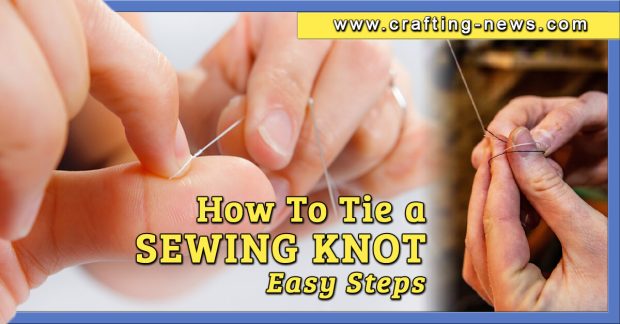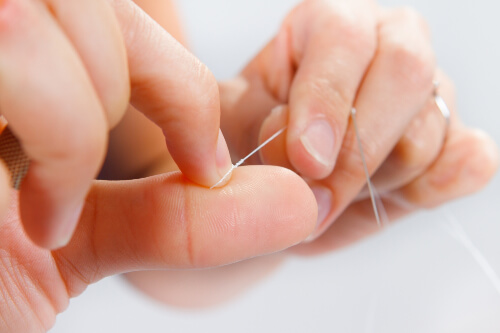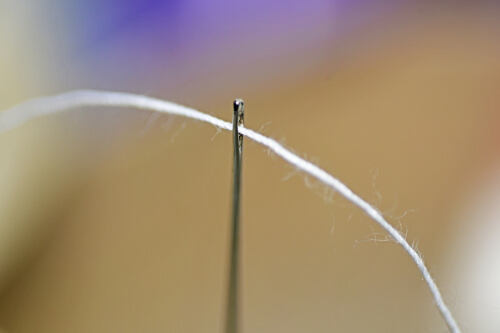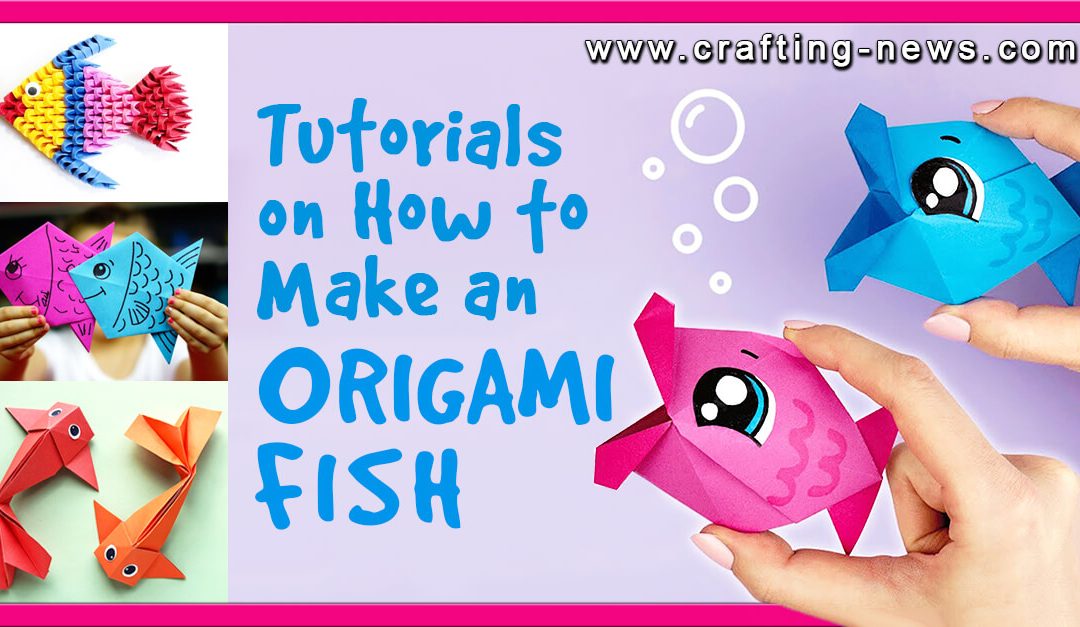Are you tired of your sewing knots coming undone? Are your knots too big and bulky? A proper knot is very important for strength and looks. If you are unsure how to tie a sewing knot properly, you have come to the right place. Below, I will take you step-by-step through the process.
Whether you are new to sewing or an experienced seamstress, knowing how to tie a sewing knot is essential. From simple hand stitches to intricate embroidery projects, a well-tied knot ensures your threads stay in place. It will also be less visible on your finished project.

Benefits of Learning How to Tie a Sewing Knot

There are many benefits you will receive by learning how to tie a sewing knot. These include:
- Secures the Stitches
Tying a proper sewing knot will help to guarantee that your stitches remain secure. A good knot will prevent the stitches from unravelling over time.
- Adds Durability
A strong sewing knot will add to the structural integrity of your project.
- Secures Embellishments
A proper knot will help secure decorative elements like beads, sequins, and buttons. The knot will keep them firmly in place.
- Professional results
Knowing how to tie a sewing knot will help you create high-quality, professional-looking projects.
How to Tie a Sewing Knot

Learn how to tie a sewing knot by following these simple steps.
- Thread your needle. Start by threading the thread through the eye of the needle. Double the thread over, so you have 2 thread tails that are equal in length.
- Create a circle with the thread, while holding the tails at the back of the needle, near the eye.
- While holding the tails in place, wrap the thread around the needle 3-4 times.
- Slide the wraps under your thumb that is holding the needle. Hold onto them tightly.
- Pull the needle from the tip end, allowing the wrapped thread to work its way down to the tails. This will create the knot.
- Trim off the tails after the knot.
Tips for Tying a Sewing Knot

Are you looking for some advice on how to tie a sewing knot? Below are some helpful tips that will help you create the perfect knot.
- Wrap the thread neatly.
When wrapping the thread around the needle, ensure that the wraps are tight, uniform, and neat. This will help to create a secure and tidy knot.
- Hold the thread tightly.
When sliding the wrapped thread under your thumb, hold it tightly. You do not want the wraps to come loose. Also, hold the thread tightly when pulling on the needle.
- Leave a long tail.
It can be hard to work with short pieces of thread. It can even be harder to create the perfect knot. When making a knot, leave long tails. This will provide you with plenty of thread to work with.
- Do not pull too hard.
When pulling on the needles, do not tug too hard. Doing so can break the thread.
- Trim the tails.
After the knot is made, trim off the tail ends. This will help you achieve more professional-looking results.
- Test the knot.
Before you begin sewing, test the security of the knot by gently tugging on it. If it feels loose or comes undone, tie another knot.
- Practise
Learning how to tie a sewing knot it very simple. However, by practising, you will be able to create even better knots.
Frequently Asked Questions About Tying a Sewing Knot
Do you have to tie a knot when sewing?
No, it is not always necessary to tie a knot when sewing. Using a knot will depend on the technique you are using. When hand sewing, it is often recommended to make a knot.
Why is a sewing knot important?
Tying a sewing knot is important because it ensures your stitches remain secure. The knot prevents the thread from unravelling over time. The knot also adds strength and durability to your projects.
How do I tie a sewing knot?
Tying a sewing knot is very easy, once you know the basics. To tie a knot leave a tail of thread, make a loop, wrap the thread around the needle 3-4 times, then slide the wraps down the thread.
Should I trim the excess thread after tying a sewing knot?
Trimming the excess thread after tying a sewing knot is recommended for a neat and tidy appearance. Doing so will also help prevent tangling while sewing.
Is it hard to tie a sewing knot?
No, it is not hard to learn how to tie a sewing knot. It is actually one of the very first skills you must learn. You can easily learn how to make a proper knot with just a few tries.
Learning how to tie a sewing knot is a valuable skill everyone should know.
Whether you are a beginner or an experienced sewist, mastering this technique ensures secure stitches. By following my step-by-step how to tie a sewing knot instructions and practising, you will be able to tie knots with confidence.
For more sewing-related articles, tips and techniques check out some articles below:
- How to Sew a Patch
- How To Sew a Hole
- How To Sew A Hem Stitch by Hand
- How to Sew an Invisible Stitch
- Best Sewing Cutting Tables
Let us know your progress in learning how to tie a sewing knot on our Facebook Page. There you can also find sewing projects you can try.






